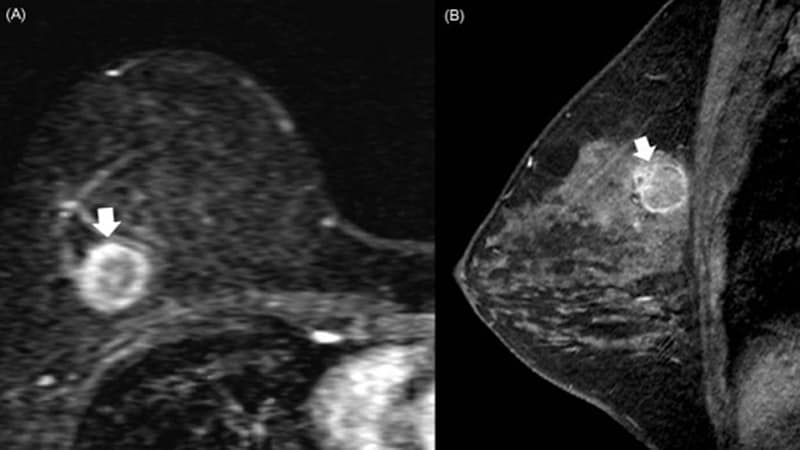This transcript has been edited for clarity. For more episodes, download the Medscape app or subscribe to the podcast on Apple Podcasts, Spotify, or your preferred podcast provider.
Forest W. Arnold, DO, MSc: Hello. I'm Dr Forrest Arnold. Welcome to Season 2 of the Medscape InDiscussion podcast series on respiratory syncytial virus (RSV) in adults. Today we'll discuss epidemiology and the approach to RSV in adults. First, let me introduce my guest, Dr Angela Branche, associate professor of medicine at the University of Rochester. Part of her research involves population-based studies of RSV infection and the development of vaccine and antiviral agents for RSV. Dr Branche, welcome to the Medscape InDiscussion podcast.
Angela R. Branche, MD: Thank you, Dr Arnold. I am happy to be here.
Arnold: Please tell us where you work and what your job entails.
Branche: I work at the University of Rochester Medical Center. I'm an adult infectious disease physician. My clinical practice, both inpatient and outpatient, is anything related to infectious diseases or HIV medicine. I have been here about 12 years altogether. Rochester has a longer winter season, which makes it the ideal place to study respiratory viruses. Historically, the University of Rochester has been known for its study of respiratory viruses like influenza, RSV, human metapneumovirus, and coronaviruses. We've also done a lot of work defining the burden of disease in adults as well as helping to develop vaccines and therapeutics related to that.
Arnold: Do you think the cold weather and people having to be forced together is what promotes all those respiratory infections, including RSV, or is it another factor?
Branche: I think it's a lot of indoor exposure — folks hanging out together indoors and in environments where they can transmit viruses. We have 6 months of winter, so that's a lot of time for people to be indoors transmitting viruses to each other.
Arnold: Yes, it sure is. Since you're an epidemiologist, why don't you tell us some of the prevalence and impact of RSV infections on adults?
Branche: RSV infections cause seasonal epidemics in adults and children every year. In most seasons, the incidence is probably similar to influenza's, causing as many infections as influenza in adults, which I think is something that's not as well recognized. I would say the annual incidence of RSV causing hospitalizations in adults 60 years or older ranges probably somewhere between 6% and 8%. It causes between 140,000 and 170,000 hospitalizations every year, probably 1-2 million medically attended illnesses. Those are illnesses where you'll see your doctor, go to an urgent care, be seen in the emergency room, etc. Depending on the estimates you look at, there are about 10,000-15,000 deaths in older adults every year, which is not insignificant.
To put it in perspective with influenza, there are anywhere from 10,000 to, in a very bad flu season, up to 80,000 or 90,000 deaths due to influenza in all adults, not just older adults. RSV causes very predictable mortality of 10,000 to 14,000 or 15,000 deaths every year, and it doesn't change very much; that makes it quite significant in this population.
Arnold: If you look at the incidence of any respiratory virus, I think people are surprised to hear that we declare that there's an epidemic every year. But there is, and I think you're very correct in saying that. Pre-COVID and before RSV was very significant in adults, we used to just, in the middle of the epidemic, treat influenza based on clinical symptoms and not so much on a test after a while. How has that changed today with an epidemic? Is there a point at which we can stop testing, or now, with more viruses, is that test with the nasopharyngeal swab important?
Branche: Unfortunately, in the winter season we have multiple viruses and bacteria circulating that can cause respiratory illnesses that require you to see your doctor or be hospitalized — what we call medically attended illnesses. RSV tends to start circulating first, interestingly enough, in the Southeast, and then it moves its way up to the Northeast and starts to move to the Midwest. The last place where we see RSV epidemics starting to appear in communities is the Northwest. By December, probably the entire country will have lots of RSV circulating in their communities, but the timing is slightly different. Flu overlaps with that. Flu tends to appear about a month to 6 weeks after you start to see RSV. You'll see RSV first, and then you'll see flu appear in your community about 4-6 weeks later.
There are other viruses — coronaviruses, human metapneumoviruses — that also overlap in that same winter season. They might have slightly different timing. December or January might be when you start to see metapneumoviruses appearing and peaking. Coronaviruses are very variable. The clinical syndrome of any one of these illnesses in people at risk for severe disease, for bronchitis and pneumonia — specifically in older adults — overlaps as well. So it's really clinically indistinguishable to a treating physician or provider whether what's causing illness is flu vs COVID vs RSV. They all look the same. There are some minor differences; RSV tends to have less fever and tends to be a very wheezy kind of illness, but by and large, it's clinically indistinguishable. It's really fortunate that we now have good diagnostic testing, because you do need to make a diagnosis so your patient knows what they have, and so they also know what they don't have. Why is that important? There are antiviral treatments for influenza and COVID. So if you know that it's COVID or flu, you can give Tamiflu, you can give Paxlovid, and they will help decrease the duration of illness and the severity of symptoms. RSV does not have a treatment, but on the other hand, if someone has RSV, you don't want to give them a drug they don't need. Being able to prescribe the right treatment for the right infection is of critical importance. It also helps you manage your patient's expectations. If there's something I can do that'll help, great. If there's something I can do that won't help, I need my patient to know that too. These are all really important clinical decision-making tools, which is why we really do stress making that diagnosis whenever you can.
Arnold: We've talked on this podcast before about a 3-plex test for influenza, COVID, and RSV. There's also a multiplex that includes other viruses, such as adenovirus, parainfluenza, and metapneumovirus. What you just said was really important and I think it's worth repeating. Maybe you could just tell us the consequences of delayed or inaccurate diagnosis.
Branche: I'm a respiratory virologist and an infectious disease doctor. I find it so critical and important to be able to tell my patients what I think they have or what a diagnostic test shows. Obviously I'm a fan of using diagnostic tools whenever you can, but I recognize that in practice, some of these tests are expensive. They're not always widely available. Clinicians really have to think what's going to shift the needle in terms of how they care for their patients. I think that early and timely diagnosis of influenza and SARS-CoV-2 will help you make important treatment decisions. I think early and timely diagnosis of RSV will help you to know how to support your patients and will prevent you from doing things that aren't needed, like getting echocardiograms, getting urine tests, giving antibiotics, giving things that won't help your patient and potentially could actually hurt them. I think our early diagnosis, specifically of RSV, will help with transmission in important settings like hospitals, nursing homes, in adults who go to daycares. Even within a home, knowing that you have an RSV-infected person, because RSV is so easy to transmit, will help you protect others around that infected person.
Arnold: How does the epidemiology of RSV in adults differ from that in children?
Branche: Like most respiratory viruses, RSV does tend to cause more severe illness in extremes of age. The most infections we see in a year, nationwide or worldwide, are in children 2 years or under. It's a major cause of hospitalization in young children. However, the most deaths that we see in the United States are in older adults. That's why, even though you might not see millions of cases in adults in the United States, in the ones you do see, there's a significant risk for mortality that we don't have in young children right now — thankfully. The other thing that's different about these two groups in terms of their illnesses is that they can present differently. Often, young babies and toddlers that get infected with RSV will have bronchiolitis, which is sort of a childhood version of bronchitis — really severe airway obstruction. They could develop pneumonia. They tend to get acutely ill very quickly. Within a few days, they'll present to your office or the hospital because they're quite sick. Many of them will have fever, and so it's easy to see the impact of RSV early on with children. In adults it tends to be a little more insidious. They might have a cold for 3 or 4 days, and then as it progresses and gets down to the lower respiratory tract into the lungs and the lower airways, that's when they'll have wheezing and shortness of breath. If they have underlying chronic medical conditions affecting the heart or the lungs, they'll have exacerbations of those conditions. By time they come to see you, they're probably 5-7 days into their illness. At that point, it's not necessarily how quickly they can clear the virus; it's more about what damage has this viral infection done to their airways and their lungs? What has it exacerbated? How do you manage all those other things?
Arnold: RSV in both of those populations, children and adults, peaks in the winter. But do the peaks exactly overlap?
Branche: I think it starts in children first, typically. You'll start to see babies being hospitalized or seeing their doctors probably about 2-3 weeks before you start to see adult infections. The peak for babies will tend to be a few weeks earlier than adults, but there is pretty good overlap. For whatever reason, babies and children, and school-age children particularly, are just sort of the reservoirs for RSV and what starts an epidemic within the community.
Arnold: Adults should take the increase in RSV in children as a heads-up that, hey, they really need to be cautious about the weeks ahead because they'll be more at risk. What risk factors are we concerned about that might lead to the worst RSV, that results in a hospitalization for adults?
Branche: We've been studying this here, and others around the country and around the world have been studying it too. There are some very specific risk factors that predispose people to more severe RSV disease. They're not unique to RSV. You'll see some of the similar risk factors with influenza and COVID as well. The most well-defined risk factor in adult populations is age. For every decade of life over 60, you basically double the incidence of RSV as you move from sixties to seventies and seventies to eighties. Adults in their mid-seventies and eighties are probably the best-defined and potentially the highest-risk groups. We tend to recommend universal vaccination in those age groups.
For adults in their fifties and sixties, risk is more based on the presence of certain underlying medical conditions; specifically, chronic cardiac and chronic pulmonary conditions confer some of the higher risks. Chronic pulmonary conditions like COPD and asthma have been associated with increased risk for hospitalization, needing oxygen, and ending up in the ICU. Risks that I think are less well appreciated, but may be even more important, are the cardiac risks. RSV has been associated with increased risk of having an acute myocardial infarction; after you have an RSV infection, in those first 3 days there's maybe as high as three times the risk of having a heart attack in somebody with heart disease. It's also associated with up to a 20 times increased risk for hospitalization if you have heart failure and you get RSV. That's an incredible risk factor. There are other things that we're still working to understand and define, like diabetes — but mostly poorly controlled diabetes — chronic kidney disease, folks on dialysis, and those sorts of things.
Arnold: When we consider epidemiology specifically, people are more familiar with the communicability of a pathogen as expressed as R naught (R0). Would you remind us about what R0 means and where RSV falls on that scale?
Branche: R0 is a mathematical model that helps you to understand how transmissible a virus is from person to person within a community. To put that in perspective, measles is probably the most transmissible virus that's ever affected human populations, and I think that had an R0 of something like 10-12, which means that for every person that gets a measles infection, they would then go on to transmit it to 10-12 people. Seasonal influenza has an R0 of somewhere around 1.5, so between 1 and 2. Every person infected with flu will go on to potentially infect one or two other individuals, if they expose them to their infection. SARS-CoV-2 (COVID) has an R0 of somewhere between 2 and 3. So that's more than flu but not as infectious as RSV, whose R0 is 3. Every person infected with RSV will go on to infect three other individuals. That's probably because RSV can infect you in a way that many other respiratory viruses can't, including influenza and to some extent SARS-CoV-2. With RSV, you don't get infected just by having somebody sneeze or cough in the air and inhaling those respiratory droplets. With RSV, it's actually in the snotty nose from the kid that you're holding or whose nose you're wiping. It's on the surface that the tissue landed on, and it stays on that surface for a number of hours. That's something that influenza can't do. It can't live on surfaces for an extended period of time, whereas RSV is more hardy and it can. So there's the possibility of transmission by just coming into contact with contaminated surfaces, which is what probably increases that R0 a little bit.
Arnold: When we think about RSV and epidemics from the healthcare worker perspective, they encounter hospital protocols where they work, they encounter state policies in the state they live in, and then there are national CDC guidelines. What do you recommend to these healthcare workers to process all of these different suggestions coming at them?
Branche: I think navigating all of that is tricky. I would pick two of the three recommendations and not try to synthesize all three. The most important guidance is what's happening locally. Whatever your local state health department or local health department or local institution advises, that's probably the first one you should try. They are a little bit different, but they're not so different that it'll really have a meaningful impact on transmission. I would start first with whatever your local institution's guidance is. I think the CDC is a great resource. That would be my next approach, to just get a general overview of why policies are what they are. I think the CDC offers the best overview and explanation of why we do certain isolation practices — contact vs droplets vs a combination of both, which is what we typically do with RSV. I think the CDC also has a lot of good resources for healthcare workers around vaccinations and risk factors, and how to have conversations about vaccinations with your patients. That would probably be my second look if I were a healthcare worker and I was confused about all the different recommendations and how they do and don't overlap.
Arnold: Right. The local guidelines may have more specific recommendations for the isolation you're talking about or cohorting. I'm interested in your opinion on cohorting; what do you think its role is?
Branche: Cohorting is a tool that we use to prevent nosocomial transmissions within hospitals and also within long term care facilities. I think it's very important. Nursing homes are a good example of how cohorting does or doesn't work, or may or may not be important. When you have a nursing home that does routine testing of respiratory illnesses, for influenza and RSV, and they detect RSV, then they can isolate the entire floor. They can start by isolating the room and then the entire floor. They can do screening testing of that floor to see if there's asymptomatic transmission going on. That's how cohorting really helps you to contain the spread of the virus within your healthcare system or your institution or your ward. In the absence of cohorting, of knowing when somebody is asymptomatically transmitting virus — or potentially their risk of becoming infected because they're near somebody who's infected — I think what you end up having is a rapid spread of transmission of the virus throughout that area, throughout the nursing home, throughout the unit. Cohorting is one of our best tools for prevention. When you have folks confined to certain locations and you know that people will be bringing in viruses, how do you prevent that transmission? I think cohorting is one of our strategies.
Arnold: As we wrap up today, is there a certain website or place you can recommend to healthcare professionals who seek to learn more about RSV diagnosis and management?
Branche: I really do like to direct people to the CDC. I think the tools there are exceptional. They have tools for healthcare workers and they have tools for patients. I would really strongly recommend that folks visit those sites and make use of those resources for all the questions that they have on everything from disease burden, to transmission, to surveillance testing, to vaccines, and to treatments. All of those questions are answered in a very detailed way that I think will be helpful.
Arnold: Thank you. Today we've heard how important an accurate diagnosis is so that treatment can be directed accordingly, and so that treatment for COVID or influenza cannot be used on somebody who doesn't have that respiratory virus. Another important point was that for each decade of life over 60, the incidence of RSV in patients doubles, and heart disease increases the risk for hospitalization up to 20 times. Today we've talked to Dr Branche about epidemiology and the approach to RSV in adults. Thank you for tuning in. Please take a moment to download the Medscape app to listen and subscribe to this podcast series on RSV and adults. This is Dr Arnold for the Medscape InDiscussion podcast.
Listen to additional seasons of this podcast.
Resources
Respiratory Syncytial Virus Infection
Seasonality of Respiratory Syncytial Virus — United States, 2017–2023
Rates of Medically Attended RSV Among US Adults: A Systematic Review and Meta-analysis
Multicenter Evaluation of the Cepheid Xpert Xpress SARS-CoV-2/Flu/RSV Test
Comparative Analysis of Three Multiplex Platforms for the Detection of Respiratory Viral Pathogens
Centers for Disease Control and Prevention: Respiratory Syncytial Virus (RSV)

.webp) 2 weeks ago
6
2 weeks ago
6
























 English (US)
English (US)